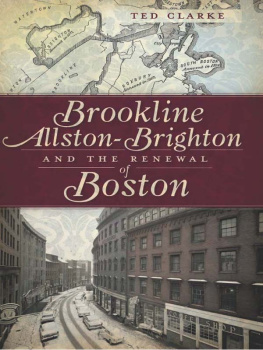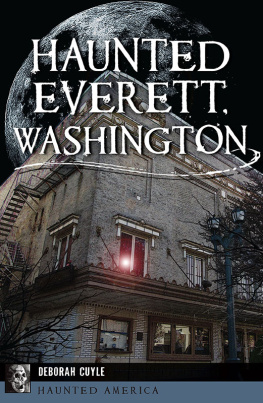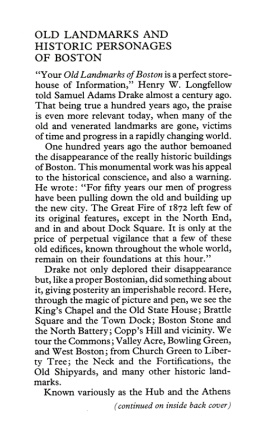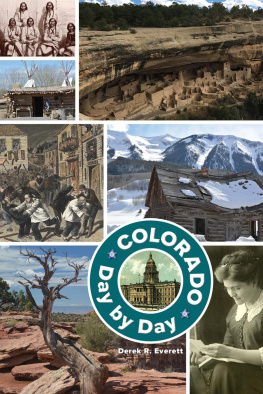INTRODUCTION.
This little book is not so much a guide book in itself as an introduction or key to local guides, or a preparation for conversation with intelligent Boston people, who will meet a new comer into that town.
Every summer there arrive people from different parts of the nation who have a curiosity about the history of Boston, or about its present activities, which they would gladly gratify, as well as possible, in a few days' stay here. Perhaps they have ancestors among the fifteen thousand people who united in the capture of Louisburg, or the twenty thousand people who, thirty years later, defied King George. I recollect what I would gladly have done and said, first, had my friends the Inghams and their children ever materialized far enough to appear at the station in Park Square, and, second, if my own deserts and desires had ever materialized so far that I could send my coachman and carriage to meet them. I have written to Colonel Ingham, the head of that little host, the traveling directions which the reader has in hand. At various places, if he need them, as at Concord, at Lexington, or at Cambridge, he will find local guide books which will be of use to preserve, for memoranda which, at the moment, one has not time to write down.
Before leading the reader on any of the separate excursions proposed, it will be well that he should know something of the original make-up of the peninsula on which the town of "Boston proper" has been built, for the original Boston of the Fathers has been enlarged by the filling in of coves and the building of sea walls. The district north of the line which separated old Boston from the mainland has more than twice the area of the "Neck," as they called it, which then appeared above the water.
In our day we are apt to use the word "neck" for the isthmus which connects a peninsula with the mainland. Linguists may interest themselves in observing the connection between nexus, the bond which unites two bodies, and the neck which connects one's head with his shoulders. In our earlier days, however, the Neck, as a geographical term, meant the whole peninsula. And on the New England shore now people use the word in the same way. Thus they speak of Marblehead Neck, as the peninsula which a short neck between two coves connects with the mainland.
The phrase "Boston Neck" has of late days been given only to the ridge of gravel which connected the town with the mainland.
To the peninsula itself different names were given by the early adventurers. It had originally the outline of a "fiddleor, if you please, of a pear. It projected northward from the mainland, and on the other side of the channel of Charles River, Charlestown, another "neck," not dissimilar, projected southward as if to meet it. Geologically each of the two peninsulas is a large "drumlin," such as were left in all eastern Massachusetts by the progress and by the receding of the great glacial wave which swept over our part of North America somewhat less than ten thousand years ago. In the debris of this wave you pick up pebbles which have been ground off from the rocks of the White Mountains, and regions farther north than they.
Different observers of the olden times describe the peninsula in different ways. William Wood, an Englishman who came over before 1630 and staid till 1635, says of it: "His situation is very pleasant, being a Peninsula hem'd in on the South side with the Bay of Roxberry, on the North-side with Charles River, the Marshes on the backe-side, being not halfe a qvarter of a mile over; so that a little fencing will secure their cattle from the Woolves. Their greatest wants be Wood and Medow-ground which never were in that place; being constrayned to fetch their building-timber and firewood from the Islands in Boates, and their Hay in Loyters.
It being a Necke and bare of wood, they are not troubled with the great annoyances of Woolves, Rattlesnakes, and Musketoes."
Edward Johnson, in the Wonder-Working Providence, wrote about 1650: "The chief edifice of this City-like Towne is crowded on the Sea-bankes, and wharfed out with great industry and cost, the buildings beautiful and large, some fairely set forth with Brick, Tile, Stone, and Slate, and orderly placed with comly streets, whose continuall enlargement presages some sumptuous city.... But now behold the admirable Acts of Christ: at this his peoples landing, the hideous Thickets in this place were such that Wolfes and Bears nurst up their young from the eyes of all beholders, in those very places where the streetes are full of Girles and Boys sporting up and downe, with a continual concourse of people. Good store of Shipping is here yearly built, and some very faire ones."
In 1665 the Royal Commissioners, or some person employed by them, wrote in describing Boston: "Their houses are generally wooden, their streets crooked, with little decency and no uniformity."
But Josselyn, who had been here but a short time before, said of the town: "The houses are for the most part raised on the sea-banks, many of them standing upon piles, close together on each side of the streets as in London, and furnished with many fair shops; their materials are brick, stone, lime, handsomely contrived, with three meetinghouses or churches, and a town-house built upon pillars, where the merchants may confer; in the chamber above they keep their monthly courts. Their streets are many and large, paved with pebble stones, and the south side adorned with gardens and orchards."
The shape of the "drumlin" and its three hills has given the direction of the older streets, and determined the map of the present city. The settlers were not such fools as to suppose that streets must be straight, or that they must ran along astronomical meridians or parallels. Where a street went in from the sea, it went at right angles from the shore or nearly so. Where Beacon Hill, or Copp's Hill, or Fort Hill rose, the roadway at the base went round them and not through them.
Given these preliminary streetscurves around the bases of the hills, and radii, so to speak, running from the water's edge to meet themrun the main street north, midway between the shores of the coves, and you have the key to what a stranger calls the intricacy of the streets of the town.
The winding line of the shore, deeply indented by coves, suggested at once operations for artificial embankments. The rise and fall of the tide is from eight to twelve feet. It occurred to the settlers very early that by making a causeway, where Causeway Street now runs, and adjusting gates to open inward, and close when the water flowed out, a mill basin could be made from the great northern cove, and kept nearly at the level tide. They therefore built this causeway, and thus, by cutting a narrow canal eastward across the town, they commanded, perhaps half the time, a waterfall from the high tide level to that of low tide, sufficient to carry a mill for grinding their corn. The tide basin thus made was called the Mill Pond.
In 1804 it was clear that the land it covered would have value, if reclaimed, of much more account than the little water power which had been used for nearly two centuries.
Enough of Beacon Hill was cut down, therefore, to fill up the Mill Pond. The canal was filled up, and became Canal Street. Here is the reason why, in the heart of the devious plan of the North End, there come in straight streets which mark the site of the original Mill Pond. And thus the original Beacon Hill lost its crest, which rose behind the State House of that day.









